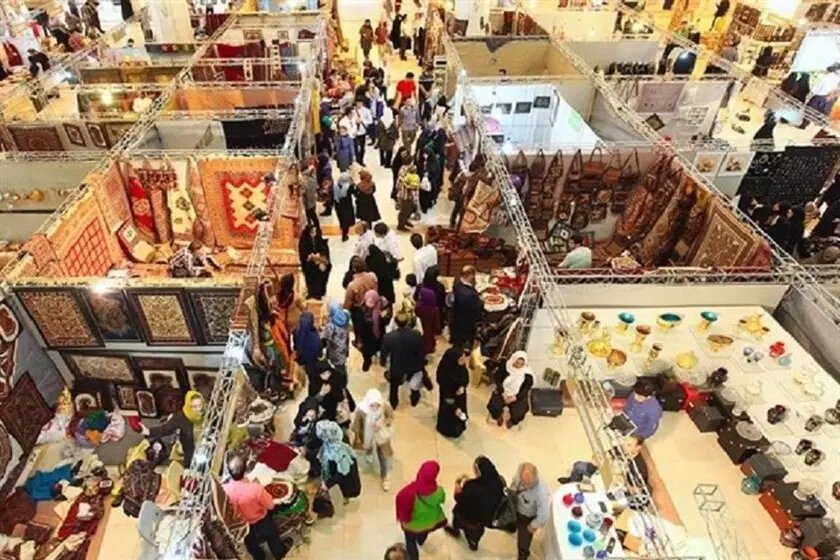Sculptor advocates for permanent craft exhibition in Tehran

TEHRAN - Renowned glass sculpture artist, Mahmoud Fadayi, participating in the eighth edition of the Sarv-e simin Festival, has emphasized the impact of holding a permanent exhibition for handicrafts.
Fadayi believes that such an exhibition would be highly effective in bringing together active artists in this field, showcasing their works, and alleviating concerns about the limited display time for their creations.
In an interview with CHTN, he expressed the positive influence of organizing such events, stating that craft exhibitions serve as a valuable platform, especially when artists seek support.
He highlighted the importance of visibility for their activities, asserting that hosting such events would contribute to recognizing their endeavors.
The glass sculpture maestro also addressed the lack of awareness among people regarding the traditional arts, particularly in regions like his, where artists shape glass sculptures by hand. He emphasized the need for a comprehensive display of this art in handicraft and traditional art exhibitions, enabling widespread public exposure and identification by enthusiasts.
In a plea to relevant authorities, Fadayi requested the establishment of a permanent handicraft exhibition, advocating for a centralized space where artists could regularly display their creations. Such a venue would alleviate concerns about exhibition deadlines and allow for ongoing exposure, benefiting both artists and the public.
Emphasizing the allure of glass sculpting, Fadayi concluded by highlighting the captivating nature of their work, expressing how people of all ages derive enjoyment from witnessing and participating in this unique art.
Currently, a total of 13 cities and three villages in Iran have been registered by the World Council of Handicrafts as “world cities of handicrafts”.
Based on available data, the handicraft sector of the country has generated jobs for more than 2.5 million people, of which some 1.5 million are registered in government databases and around 0.5 million are licensed workers.
From exquisite carpets to subtle miniature paintings, and from turquoise inlaid objects to floral pottery, each one hints at skills passed down from generation to generation. The majority of skilled Iranian artisans use raw materials like wood, bones, silk, wool, copper, silver, gold, and gemstones to create exquisite handicrafts. They perform a miracle by infusing their sentiments and cultural ideas into these traditional handicrafts. Because of this, Persian artwork is incomparably valuable compared to many other works of art from around the world.
Leave a Comment